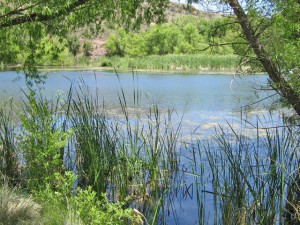This past Friday, the Central Arizona Project or CAP and the Water Resources Research Center of the University of Arizona hosted a panel discussion at the Tucson Convention Center on the current and future state of this all-important resource. The panel consisted of representatives of the city government, the Arizona Water Department and several non-profit and private consumer organizations.
The Bureau of Reclamation built CAP to help conserve groundwater supplies, which were dwindling to alarming lows in the mid-1900s. It consists of a 336-mile system of aqueducts, pumping plants and siphons that carry more than half of Arizona’s share of the run-off from the Colorado River from Lake Havasu to Phoenix and Tucson. The other states that have a share in the Colorado water supply are California, Colorado, Nevada, New Mexico, Utah and Wyoming.
There was good news – and there was bad news. The good news is that the water conservation measures and programs of the State of Arizona are among the most sophisticated in the nation, CAP being an example in point. This has resulted in a reduction of overall water consumption by about a fifth from it’s mid-20th century zenith. In some places the ground water table has risen as much as 100 feet.

The bad news is that it has dropped farther in other places. One sad example is the Agua Caliente spring, which had dried up after many, many thousands of years, in spite of our more than average rainfall this year.
The shortfall originally projected for next year has been forestalled by one or two years. But we are not out of the woods by a long shot. We all have to do our part. The agricultural sector is looking for less thirsty crops and more efficient ways to irrigate them. The energy companies are searching for ever more efficient ways to cool their power plants. The golf links are increasingly using gray water to keep the grass green. And so on and so forth.
And then there is us, the people, who consume about quarter of the water supply. What we can do as individual people? First and foremost, we can pay more mind to our water use.
We can harvest rainwater to water our gardens instead of filling the bucket from the tap.
We can take care that that tap does not run any longer or harder than necessary. We can shower a little less luxuriously.
We can reduce the amount of water needed to flush the commode. TEP offers assistance for replacing old-fashioned 3.5 gallon commodes with water-saving pots that use less than 1.3 gallons. TEP provides many other ways as well of reducing water and energy consumption on its site at tucsonaz.gov/water/conservation.
Another organization that provides creative ways to save water and addresses concerns of private consumers is the Community Water Coalition at communitywatercoalition.org.
An in-depth discussion of water issues, titled “Fathoming Water” is hosted by KXCI’s Melissa Mauzy. Episodes 1 and 2 are available at KXCI.org.
Every gallon saved raises the bottom line, so to speak, and helps to stave off the specter of a water shortfall. We’re all in this together and if we approach it together, maybe the Agua Caliente spring will flow once again.
P.S.: TEP and the Watershed Management Group sponsor ‘Edible Shade’, a mesquite pancake breakfast, on Sunday, November 22, 9 am – 12 pm, at WMG’s Living Lab, 1137 N Dodge Blvd. Bring the family!

